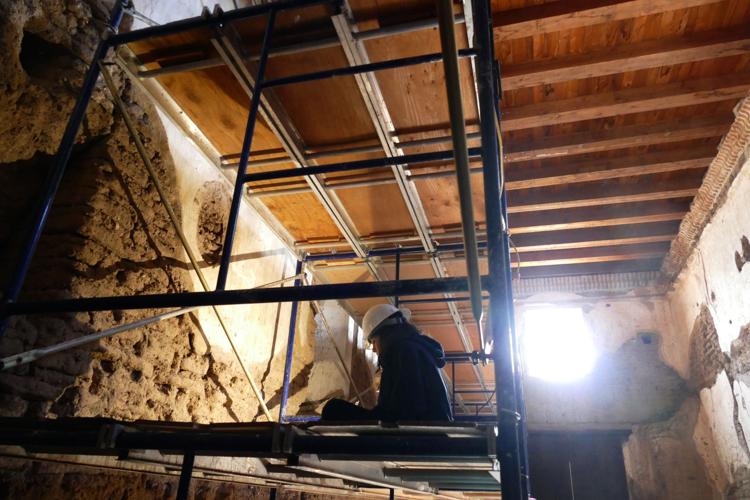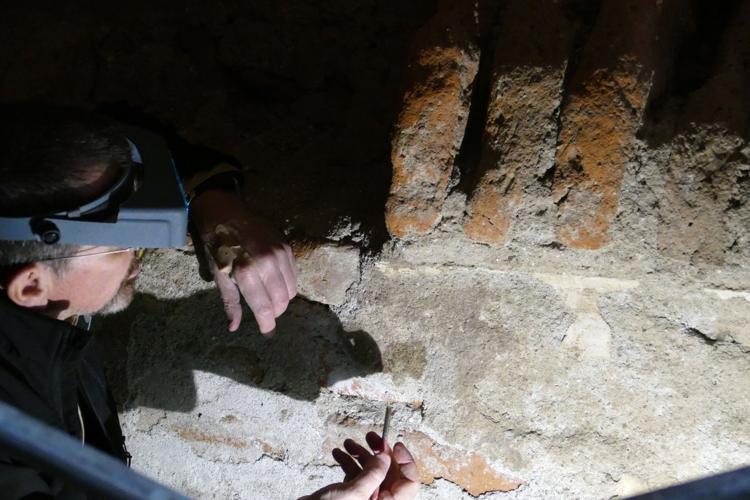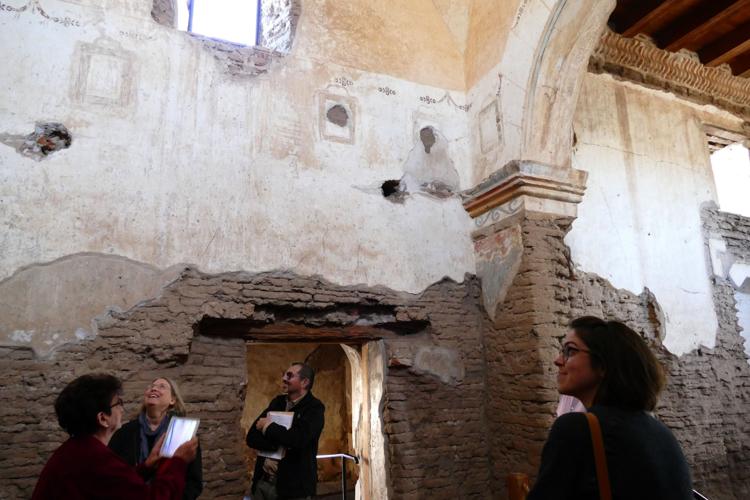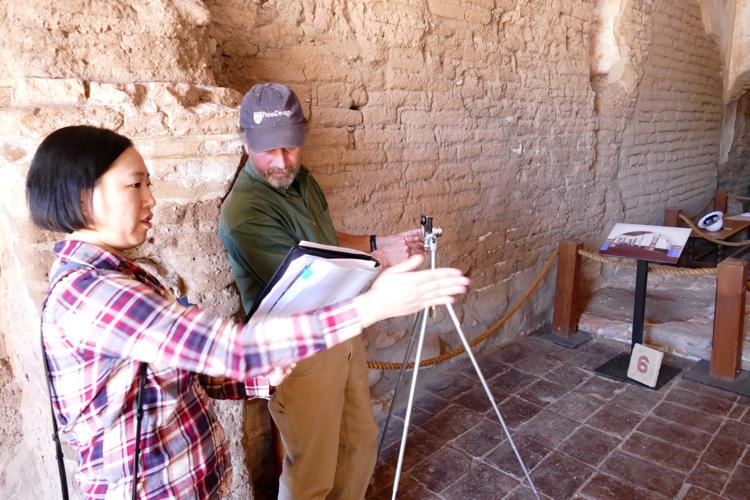A five-year, $192,000 federal grant is bringing national experts and University of Pennsylvania students to continue conservation work at Mission San José de Tumacácori.
For three weeks in August, the summer field team will work on the conservation of original plasters and painted finishes inside the church, said Alex Lim, architectural conservator at Tumacácori National Historical Park.
This is the second year of the grant for the collaborative project being hosted by the National Park Service.
The mission was established by Jesuit priest Eusebio Francisco Kino in 1691, but the current adobe church was built later by native craftsmen under the direction of Franciscan missionaries from 1800 to 1822.
The church, which was abandoned in 1848, was never completed, said Lim.
“It is a ruin and an outdoor exhibit at the park,” he said of the structure.
Kino founded 21 missions in the Pimería Alta — what is now Northern Sonora and Southern Arizona. San Jose de Tumacácori is about 45 miles south of Tucson off Interstate 19, Exit 29.
Project investigator Frank Matero, a University of Pennsylvania professor of architecture and director of the Architectural Conservation Laboratory, will head the team of experts and graduate students during the project.
Matero is well known for his teaching and research that is focused on historic building technology and the conservation of building materials that emphasize masonry and earthen construction.
He has consulted on projects including the fortifications of New York’s Guggenheim Museum and the historical Trinity Church, the Lincoln and Jefferson memorials, and Ellis Island.
In addition to the mission in Tumacácori, Matero has also worked on Franciscan missions in California and Texas, and Dominican missions in Puerto Rico.
The team first worked at Tumacácori in 2014, when it performed emergency treatment of the mission’s facade, said Lim. In two weeks, conservators from Tumacácori and the University of Pennsylvania will focus on the east wall of the nave.
During field work this past winter, the team tested a new method to strengthen the lime plaster, which coats the adobe walls, said Lim.
“We will be using nanotechnology to deliver fine particles in lime plaster so that it hardens and prevents the plaster from crumbling,” said Lim.
He said the team is also testing the injection of mud grout into cracks to address structural weaknesses in the adobe.
“Mud grout has been around for a long time, and we are building on the research and past efforts. We are fine-tuning it to use for this particular ruin,” he said.
“Our hope is that both techniques — the use of nano-lime and mud grout — can become more successful and adopted by other professionals in the fields who work in similar science.”
“We are working to protect our nation’s treasures,” he said. “This mission is quite a blessing, it is a special site. Even though it is not a living church, Mexicans, Americans, Tohono O’odham and Yaquis see it and love it because it is an amazing place. It was left to ruin, but it is still there.”
The mission will remain open during the conservation project, and visitors are welcome to view the work and ask questions, said Lim.
The historical park covers 360 acres. It has a visitor center, a bookstore, a museum and a courtyard garden. It attracts 40,000 visitors a year.
Lim said he is working on additional funding to host colleagues from Mexico for training and research opportunities.








